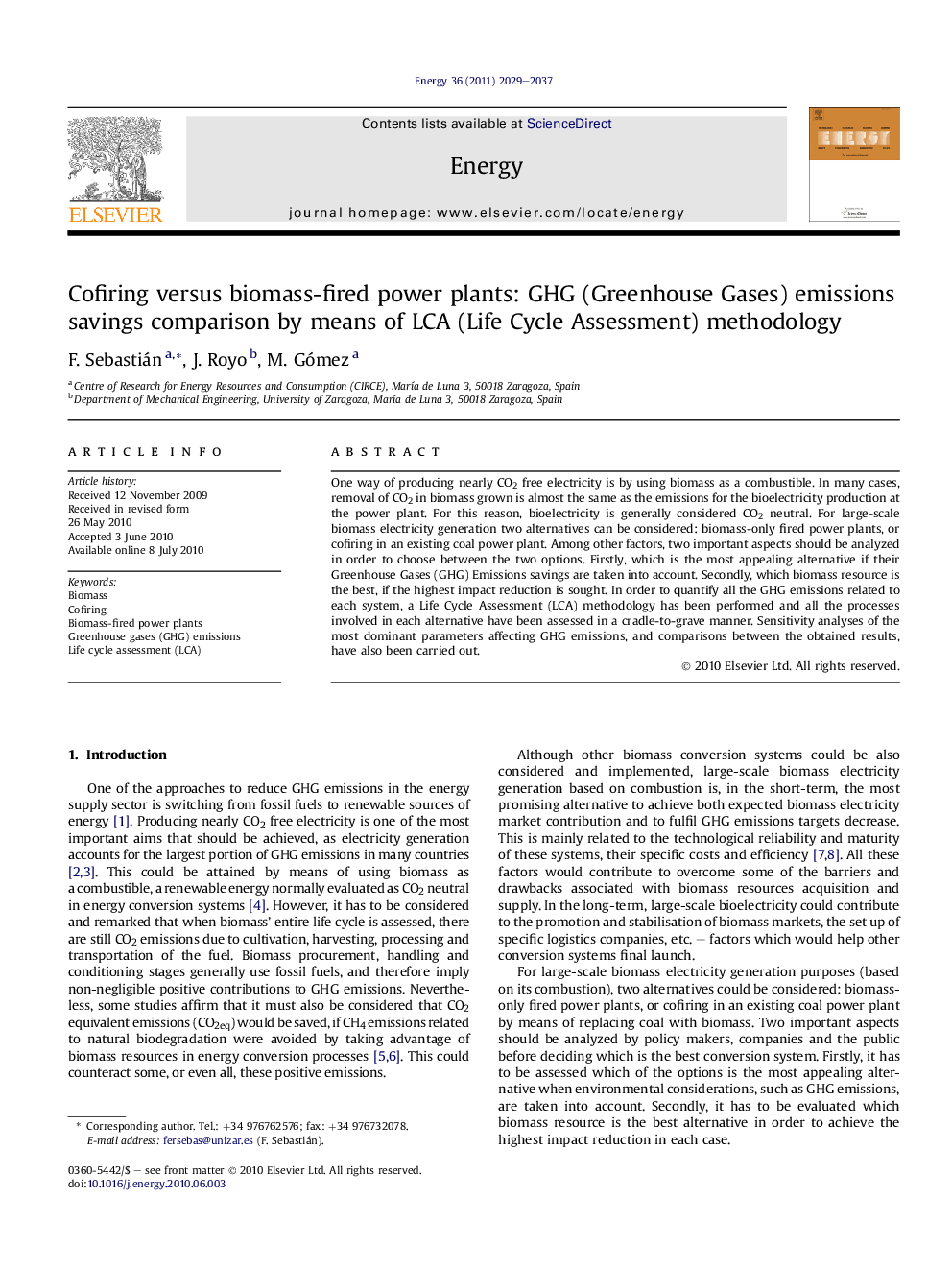| Article ID | Journal | Published Year | Pages | File Type |
|---|---|---|---|---|
| 1734885 | Energy | 2011 | 9 Pages |
One way of producing nearly CO2 free electricity is by using biomass as a combustible. In many cases, removal of CO2 in biomass grown is almost the same as the emissions for the bioelectricity production at the power plant. For this reason, bioelectricity is generally considered CO2 neutral. For large-scale biomass electricity generation two alternatives can be considered: biomass-only fired power plants, or cofiring in an existing coal power plant. Among other factors, two important aspects should be analyzed in order to choose between the two options. Firstly, which is the most appealing alternative if their Greenhouse Gases (GHG) Emissions savings are taken into account. Secondly, which biomass resource is the best, if the highest impact reduction is sought. In order to quantify all the GHG emissions related to each system, a Life Cycle Assessment (LCA) methodology has been performed and all the processes involved in each alternative have been assessed in a cradle-to-grave manner. Sensitivity analyses of the most dominant parameters affecting GHG emissions, and comparisons between the obtained results, have also been carried out.
